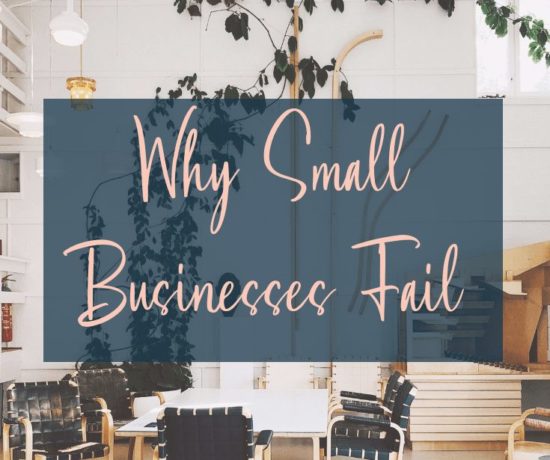How It All Started…
In June of 2005, a company “that would give the makers of the world an online platform to sell their goods” was launched. Etsy was the company’s name and after only two years in business, had become synonymous with all things ‘crafty’ and ‘vintage’. From homemade beeswax candles to every kind of jewelry piece you can think of… Oh, and let’s not forget how quickly the site gained popularity for custom-made wedding dresses!
Since Etsy’s launch, now 14 years ago, thousands of people have joined the platform to sell custom goods from their own shops, which operate on its site. Then there are the millions of ‘craft bloggers’ and ‘DIY bloggers’ who have launched their own websites since Etsy became a household name. And many of those crafters have made it big!
Just Because You Can, Doesn’t Mean You Should
In 2019, searching for craft businesses on Google turns up endless pages of articles, like “15 Tips for Turning Your Craft Hobby Into a Successful Business” and “The Pros and Cons of Starting a Handmade Crafts Business”. Ah yes, the cons… While there’s no denying that going into the craft business is a lot easier than launching most other small businesses, the fact is, most craft businesses fail.
Many enthusiastic ‘DIYers’ are being blinded by what could be and spending all their savings to launch home-based businesses. Most will discover too late that they lack the essential skills and strategies to make the ‘business’ side of their hobby, actually work.
It’s the potential of high and relatively easy profit that appeals to DIY crafters. However, craft skills are not even the most important factor in having a craft business. Just because you can launch your own candle-making hustle for under $100, doesn’t always mean that you should. Read on to find out why most craft businesses fail and how to prevent that from happening to yours.
Why Most Craft Businesses
Fail & How To Prevent It

Failure to Obtain Necessary Business Skills
 The most damaging mistake you can make as a DIY crafter turned small business owner, is failing to take the business aspect of things seriously.
The most damaging mistake you can make as a DIY crafter turned small business owner, is failing to take the business aspect of things seriously.
When you pursue your passion for a hobby, you must treat the business side of that venture just like the creative endeavor your beloved hobby has always been to you.
You must be willing to learn how to run a business, how to manage inventory and production of crafts.
If you don’t obtain the necessary skills to do so, you will fail. Not to sound too harsh but this is a serious transition and not one that everyone can actually make.
Not Organizing Your Time & Money
When crafting becomes a source of income, you must stay on top of each project. You need to get organized, develop strategies and systems that will allow you to keep track of your clients, your monthly bills, and overall budget.
Your time is literally your money now, so you need to assign a certain dollar amount towards a block of your time. If you accidentally spend longer than you should have on a project, you’re costing yourself money.
DIYing the Business Side of Your Operations
 Crafting is essentially a DIY (Do It Yourself) hobby and, by definition, a manual activity. However, DIY is not synonymous with DIWT (Do It Without Tools).
Crafting is essentially a DIY (Do It Yourself) hobby and, by definition, a manual activity. However, DIY is not synonymous with DIWT (Do It Without Tools).
On the contrary, the best DIY projects rely on a combination of skills and equipment to get the expected results.
The moment you decided to turn your hobby into a business, you had to make sure you had all the proper tools.
The Right Tools For the Job
For instance, you’re offering ‘customized shirts’ but forgot to buy a transfer solution to apply the design onto each custom clothing item.
That may have cut it when you were making shirts with an ironing board, as a hobby. You’re a professional and run a business now, so the quality of your DIY/crafty products just got the bar raised tenfold.
Forget that old ironing board and definitely forget transferring designs onto shirts via plain white paper! This is the big leagues so you’ll need a quality vinyl cutter for your transfer, which you can find right here at www.vinylcuttingmachineguide.com, along with a heat press.
Not Properly Managing Your Online Presence
 Last, but not least, you can’t sell your products unless you promote them effectively. It’s not enough to mention your business to some close friends at the local craft fair.
Last, but not least, you can’t sell your products unless you promote them effectively. It’s not enough to mention your business to some close friends at the local craft fair.
You need to use an e-commerce website or you can always set up your own shop on our good friend Etsy! Check out this link for articles on how to get started and how to make a business plan, etc, www.articles.bplans.com/etsy.
Additionally, you’ll want to create social media accounts just for your business name, so you can offer giveaways and discounts on items. You should set an Instagram account to showcase your items in your posts but also to go live once a week and talk to your customers about your creations. The shop button on Instagram will help boost your revenues too!
Many small crafting businesses often lack a professional strategy in their management, production line, and promotion. As a result, a lot of enthusiastic crafters drive their new ventures to bankruptcy in under a year! Don’t forget to keep your ‘entrepreneur cap’ on if you’re to turn your craft into a source of income.
Jessica Rose Adams





No Comments